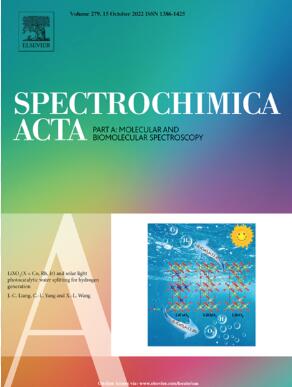SERS based determination of ceftriaxone, ampicillin, and vancomycin in serum using WS2/Au@Ag nanocomposites and a 2D-CNN regression model
IF 4.3
2区 化学
Q1 SPECTROSCOPY
Spectrochimica Acta Part A: Molecular and Biomolecular Spectroscopy
Pub Date : 2025-02-02
DOI:10.1016/j.saa.2025.125850
引用次数: 0
Abstract
Accurate therapeutic drug monitoring (TDM) of antibiotics including ceftriaxone, ampicillin, and vancomycin plays an important role in the treatment of neonatal sepsis, a common and life-threatening disease in neonates. A highly sensitive surface-enhanced Raman spectroscopy (SERS) method using tungsten disulfide/gold and silver core–shell (WS2/Au@Ag) nanocomposites was developed for the rapid detection of the three antibiotics, with a wide response range (0.5–1000 μg/mL). A two-dimensional convolutional neural network (2D-CNN) regression model was proposed to predict antibiotic concentrations in complex mixed serum solutions, simulating various drug use scenarios. The model achieved excellent regression results for ceftriaxone and ampicillin simultaneously, with R-squared (R2) values of 0.9993 and 0.9997. The integration of ultra-sensitive SERS with the 2D-CNN based deep learning model provides a promising approach for rapid TDM and personalized patient treatment.

求助全文
约1分钟内获得全文
求助全文
来源期刊
CiteScore
8.40
自引率
11.40%
发文量
1364
审稿时长
40 days
期刊介绍:
Spectrochimica Acta, Part A: Molecular and Biomolecular Spectroscopy (SAA) is an interdisciplinary journal which spans from basic to applied aspects of optical spectroscopy in chemistry, medicine, biology, and materials science.
The journal publishes original scientific papers that feature high-quality spectroscopic data and analysis. From the broad range of optical spectroscopies, the emphasis is on electronic, vibrational or rotational spectra of molecules, rather than on spectroscopy based on magnetic moments.
Criteria for publication in SAA are novelty, uniqueness, and outstanding quality. Routine applications of spectroscopic techniques and computational methods are not appropriate.
Topics of particular interest of Spectrochimica Acta Part A include, but are not limited to:
Spectroscopy and dynamics of bioanalytical, biomedical, environmental, and atmospheric sciences,
Novel experimental techniques or instrumentation for molecular spectroscopy,
Novel theoretical and computational methods,
Novel applications in photochemistry and photobiology,
Novel interpretational approaches as well as advances in data analysis based on electronic or vibrational spectroscopy.

 求助内容:
求助内容: 应助结果提醒方式:
应助结果提醒方式:


